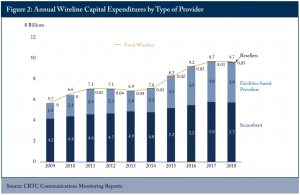This morning, Rogers announced significant expansions in eligibility and available speeds for its Connected for Success broadband program, that aims to bridge the digital divide for up to 750,000 lower income households.
Recall that Rogers was the first Internet provider to offer a program targeting disadvantaged households, announcing Connected for Success in the opening keynote address at The 2013 Canadian Telecom Summit. Initially, Connected for Success was aimed at residents of community housing systems across the Rogers footprint until the Federal Government established a qualification system as part of its support for Connecting Families five years later at The 2018 Canadian Telecom Summit.
Today’s enhancement significantly expands eligibility for Rogers Connected for Success to help bridge the digital divide for even more Canadians in Rogers service areas in Ontario, New Brunswick and Newfoundland. In addition Rogers is now offering more speed options to help support evolving connectivity needs beyond the 25 Mbps speeds provided in the basic Connected for Success package, with new packages exceeding governmental targets for broadband access.
Eligible customers can apply through the Connected for Success website and they must provide verification they receive government financial assistance under one of the qualifying programs:
- Rent-Geared-to-Income housing assistance
- Maximum Child Care Benefit
- Ontario Works,
- Ontario Disability Support Program (ODSP),
- New Brunswick Social Assistance Program,
- New Brunswick Disability Support Program,
- income and disability benefits through Newfoundland’s Income Support,
- and for seniors receiving the Guaranteed Income Supplement (GIS).
With today’s enhancements to the program, Rogers will now offer a 75 Mbps option for $25 per month, and a 150 Mbps option for just $35 per month, in addition to its basic 25 Mbps service for $10 per month. All three speed options include unlimited data. Rogers plans to offer a 50Mbps option in the Spring for $15 per month.
A Rogers customer experience specialist will contact every qualified customer to do a needs assessment, helping determine which speed service meets their household’s needs best. The program provides free installation and modem rental, unlimited data and no credit checks. According to Rogers, “This personalized experience will ensure the unique needs of every customer are met, including online schooling, accessing online social supports and job searches, attending virtual medical appointments, and combatting social isolation by staying connected to loved ones virtually.”
The Rogers media release quotes Daniele Zanotti, President & CEO, United Way Greater Toronto, “We know that COVID-19 is having a disproportionate impact on vulnerable populations and those living in poverty in Canada – with a growing digital divide in who can access much needed supports. For an isolated senior trying to book their vaccine, a mom reaching out for crisis counselling or a furloughed worker trying to re-enter the workforce, digital access is no longer a luxury – it’s a necessity.”
The Honourable François-Philippe Champagne, Minister of Innovation, Science and Industry said
The COVID-19 pandemic has highlighted how much we all rely on digital connections now. It has reinforced the importance of access to affordable high-speed Internet as, now more than ever, Canadians are working, learning and communicating with friends and family from home. It is a priority for our Government to ensure that all Canadians get connected, and we are counting on our partners in the private sector to help us achieve that goal. I congratulate Rogers on expanding its Connected for Success program, now helping even more Canadians with their connectivity needs, and further bridging the digital divide.
Today’s service enhancements to Connected for Success provide a clear path forward for affordable broadband. It meets the primary criteria set out by deputants during Toronto’s ConnectTO presentations – delivering affordable broadband now. Not tomorrow. Now.
I recently wrote that some have hijacked the term “affordability” to match their own agenda. With expanded eligibility and expanded low-priced options, Rogers Connected for Success is delivering affordable broadband to even more households today.
Rogers first launched Connected for Success in 2013, becoming the first service provider to offer a broadband solution to low income families. With today’s enhancement to the program, offering faster speeds to a broader range of eligible households, Rogers is continuing to demonstrate its commitment to developing more inclusive broadband solutions for those facing economic challenges.
 5GCC describes itself as “a multi-stakeholder Council with a membership base that includes Canadian wireless carriers, network equipment providers, academia and other product and service providers in the 5G ecosystem.”
5GCC describes itself as “a multi-stakeholder Council with a membership base that includes Canadian wireless carriers, network equipment providers, academia and other product and service providers in the 5G ecosystem.”



